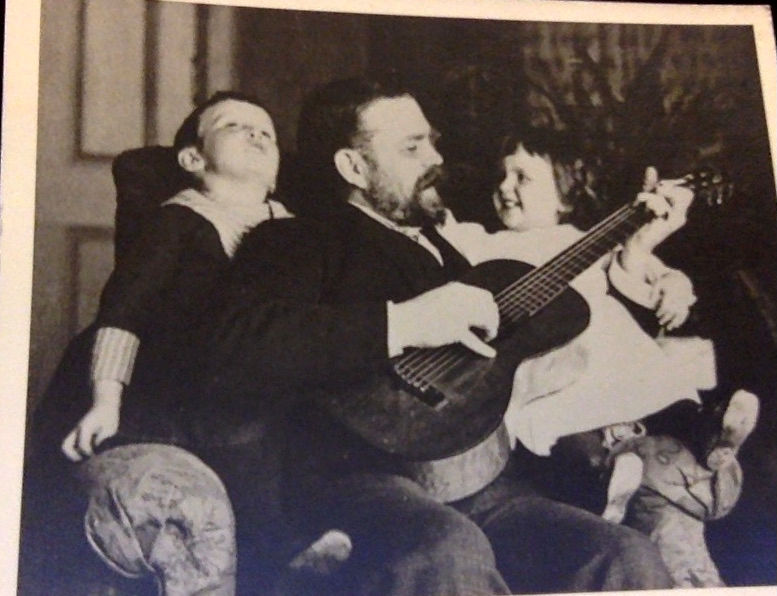Here is a very interesting Martin & Coupa-labelled guitar with some unusual features.
The Martin & Coupa label, based on my latest theory, was used from about August 1839 to May 1850 and, based on its the design features, this guitar is from the earliest part of this period.
This guitar has the "transitional Spanish body shape" that appeared between the Stauffer-shaped body, used by Martin used between 1833 and 1839, and the Spanish-shaped body that Martin perfected in 1840, and this would remain Martin's standard body shape until the 1920's. Therefore, the "transitional Spanish shape" was only used during 1839 and early 1840.
The transitional Spanish shape has a more rounded bottom of the guitar compared to the Spanish-shaped body (that has a flatter looking bottom). The back and sides are bird's eye maple and the back is veneered with another type of wood, probably rosewood but, possibly, mahogany).
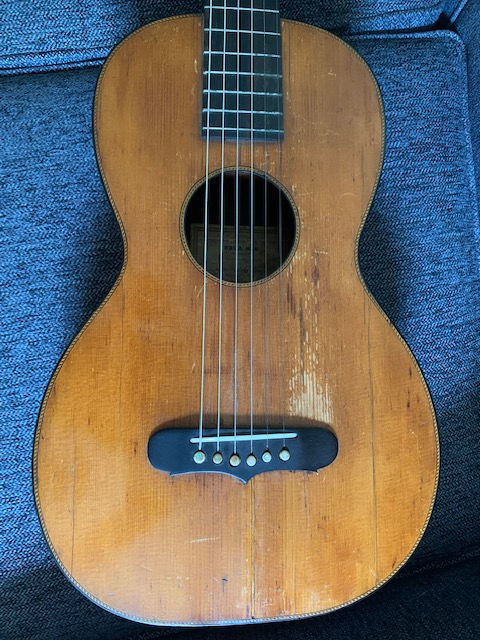
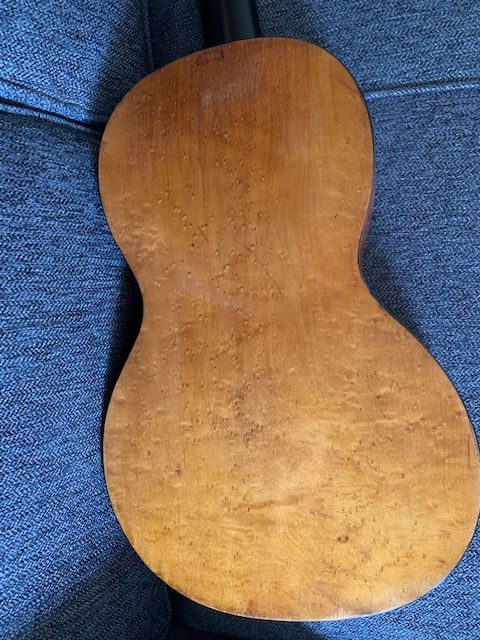
Other early features of this guitar include the "shield bridge" and the single sound hole ring located on the inside of the sound hole.
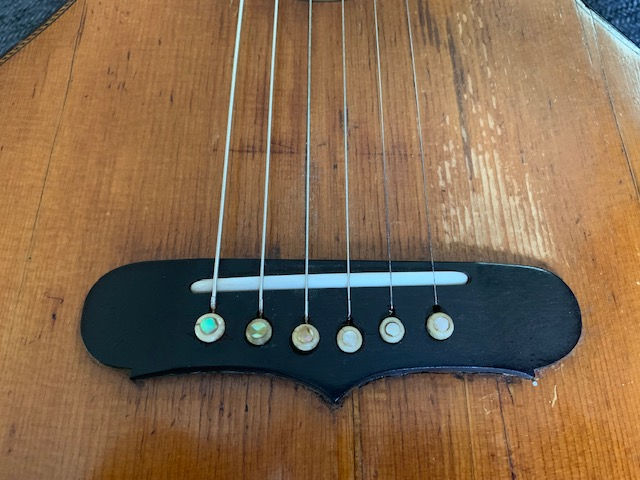
The shield type bridge was used by Martin from mid-1837 until early 1840. It may be noted that the middle two string pins of the bridge are slightly lower than the remaining four pins; this is typical for the majority of Martin shield bridges. Almost all pre-1840 Martin guitars have the sound hole decoration starting at the inside edge of the sound hole. The slanted saddle is a bit of a mystery as this feature did not become the norm on Martin guitars until 1930, so it is possible the bridge is a replacement.
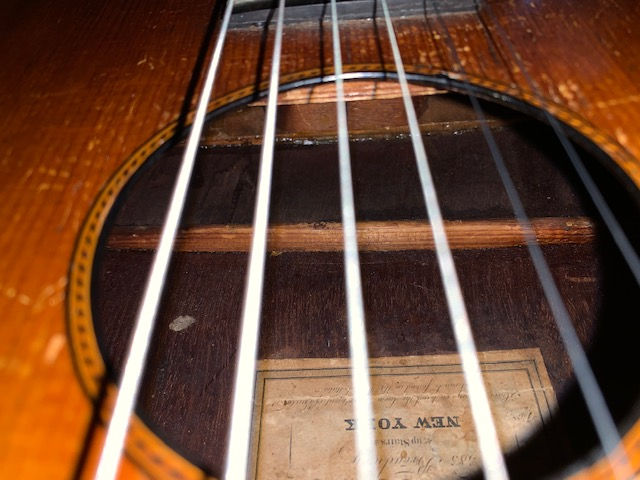
Looking through the sound hole it can be observed that the neck block is closed off at the bottom with a piece of spruce (which continues on both sides until it reaches the sides of the guitar). This is also an early feature as the extra piece of spruce closing off the dove-tail is usually the same width as the neck block. This method of closing off the neck block was only used for a short time between 1839 and 1840 and was replaced with the Spanish foot around 1840.
It can also be seen that the Martin & Coupa label is upside down with regard to the usual position of this label. I have seen over 30 Martin & Coupa-labelled guitars and the label is always seen the Martin & Coupa name oriented so it is nearest the neck block. The Martin & Coupa label was used from about August 1839 to May 1850.
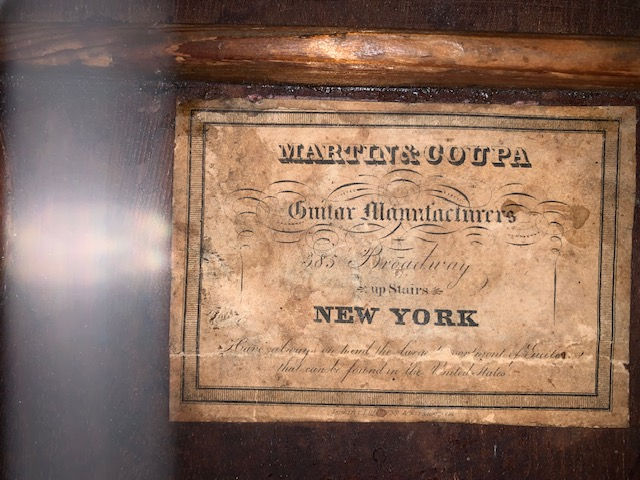
A close examination of the label shows a sliver of pinkish paper at the top of the label. It appears the Martin & Coupa label was placed over another label! This may be a portion of a Martin & Schatz type 7 label (used from approx. June 1839 to March 1840) but could also be a type 5 label from its second period of use (approx. September 1838 to May 1839) or, less likely, a Martin & Bruno type 6 label (used approx. May to September 1838).
Some of these other labels have been seen with a pinkish coloration. One guitar is also known that contains a Martin & Schatz type 7 label AND a Martin & Coupa label. In this particular case the Martin & Schatz labels refers to the factory and the Martin & Coupa label indicated the guitar was sold at the sales depot in New York.
Why the Martin & Coupa label would have been placed over an earlier label is a mystery. Possibly this guitar was sold as used in New York and the label was added by John Coupa himself.
The last interesting feature are the very unusual tuning machines, which I have not seen before. The tuners were cast in brass in one piece with the button being integral to the shaft and not as a separate piece. The cog wheel is also brass and was made in a decorative "sunflower" shape. The tuners are reminiscent to the two-side screws used on a few of Martin's earliest guitar but are not as crude.
Although Martin used two-side screws on about 25% of his early guitars they are rarely encountered. It appears that the fancier grade of Martin guitars (with the Stauffer headstock, ivory binding and fancy inlay work) have a much higher survival rate than the plainer guitars.
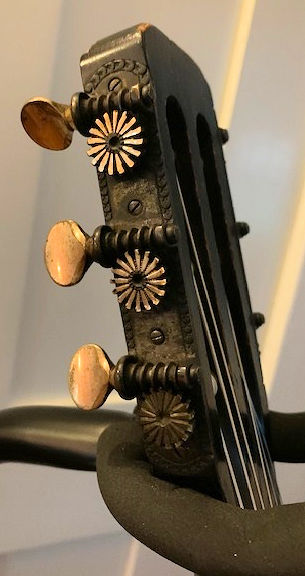
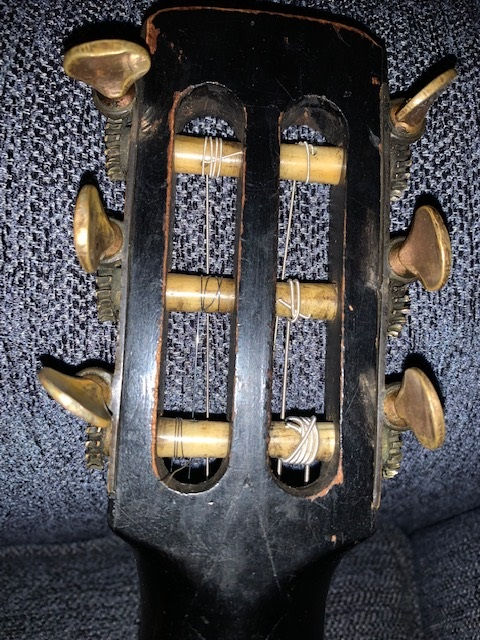
Below is a family photograph, taken in the early 1890's, showing the proud owner playing this guitar for his young children (note the clearly visible shield bridge).
